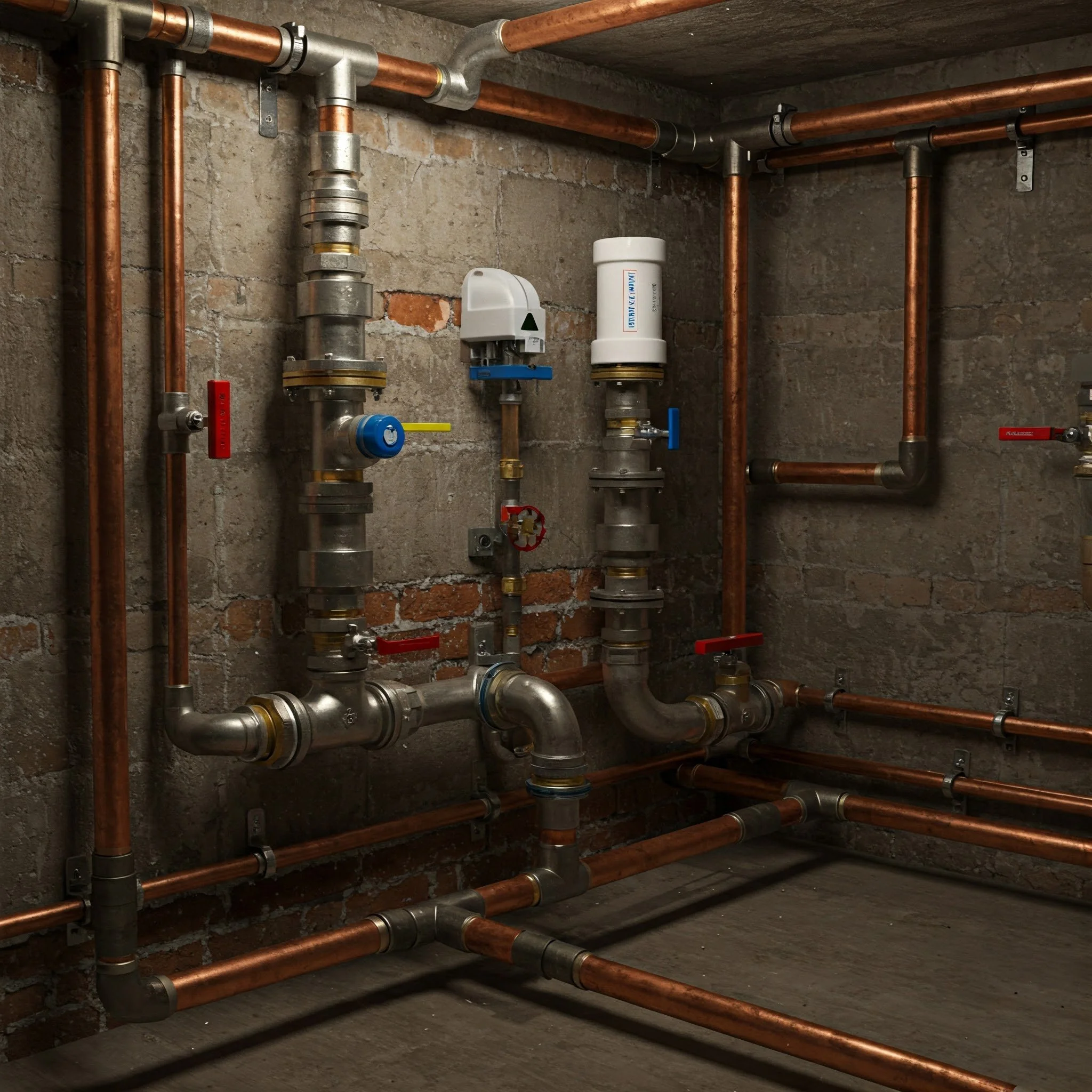How Much Does It Cost to Install a Ceiling Fan?
Wondering how much it costs to install a ceiling fan? Discover the factors influencing installation costs, average price ranges, and tips to budget your project effectively. Find out now!
Thinking about upgrading your home’s comfort and style with a new ceiling fan? Great choice! Ceiling fans not only enhance the aesthetic appeal of any room but also help regulate temperature, making your space more energy-efficient. But hold on a second—how much does it cost to install a ceiling fan? Find out now to ensure you’re budgeting right and avoid any unexpected expenses. Whether you’re a DIY enthusiast or prefer hiring a professional, understanding the costs involved is crucial for a smooth and successful installation. Let’s break it down!
Factors Influencing the Cost of Installing a Ceiling Fan
1. Type of Ceiling Fan
Not all ceiling fans are created equal. The type and quality of the fan you choose can significantly impact the overall installation cost.
Basic Fans: These are usually more affordable and simpler to install.
High-End Fans: Features like remote controls, integrated lighting, and decorative elements can increase both the fan and installation costs.
Smart Fans: Equipped with smart technology for remote operation via smartphones or home assistants, these fans tend to be pricier.
Ceiling fans come in a range of styles and functionalities, catering to different budgets and preferences. Basic fans are an affordable option, offering simplicity and ease of installation without compromising on functionality, making them a great choice for cost-conscious homeowners. For those seeking more advanced features, high-end fans provide options like remote controls, integrated lighting, and decorative designs that enhance both convenience and aesthetics, though these can increase the overall cost. Smart fans, equipped with modern technology for remote operation via smartphones or home assistants, represent the top tier of functionality and convenience. While pricier, they offer seamless integration with smart home systems. Understanding these options helps you choose a fan that suits your needs and budget.
2. Complexity of Installation
The ease or difficulty of installing a ceiling fan can vary based on several factors:
Existing Electrical Setup: If there’s already a light fixture or a fan in place, the installation might be straightforward. However, if you need to install new wiring or a ceiling box, costs can rise.
Ceiling Height: Higher ceilings may require additional materials like extension rods or specialized mounting hardware, adding to labor time and costs.
Room Layout: Odd room shapes or limited access can make the installation more challenging, impacting the overall cost.
The cost and complexity of installing a ceiling fan can vary based on several factors related to your space. An existing electrical setup can simplify the process; if there’s already a light fixture or ceiling fan in place, the installation is often straightforward. However, the need for new wiring or a ceiling box can significantly increase costs. Ceiling height is another consideration—taller ceilings may require additional materials, such as extension rods or specialized mounting hardware, which can add to both labor time and expenses. Additionally, the room layout plays a role; irregularly shaped rooms or spaces with limited access can make installation more challenging, further affecting costs. Understanding these factors helps you plan effectively for your ceiling fan installation.
3. Labor Costs
Labor is a significant part of the installation cost. Rates can vary based on your location, the electrician’s experience, and the complexity of the job.
Professional Electrician Rates: Typically range from $50 to $100 per hour.
Installation Time: Most installations take between 1 to 3 hours, depending on the factors mentioned above.
4. Additional Materials
Sometimes, additional materials are needed to complete the installation:
Wiring and Electrical Components: New wiring, junction boxes, or electrical tape might be required.
Mounting Hardware: Specialized brackets or anchors for secure installation.
Lighting Kits: If your fan includes lighting, extra components may be needed for proper setup.
5. Geographical Location
The cost of living and labor rates in your area can influence the overall installation cost. Urban areas with a higher cost of living typically have higher labor rates compared to rural areas.
Average Cost to Install a Ceiling Fan
So, how much does it cost to install a ceiling fan? On average, you can expect to pay between $100 and $300 for a professional installation. Here’s a breakdown:
Basic Installation: $100 - $150
Simple replacement of an existing fixture
Basic ceiling fan without additional features
Standard Installation: $150 - $250
Installation of a mid-range ceiling fan with lighting
Minor electrical modifications
Complex Installation: $250 - $300+
Installation of high-end or smart ceiling fans
Extensive electrical work or high ceilings
DIY vs. Professional Installation
DIY Installation
Feeling handy? Installing a ceiling fan yourself can save you some cash. However, it’s essential to assess whether you have the necessary skills and tools.
Pros:
Cost savings on labor
Personal satisfaction from completing the project
Cons:
Risk of electrical hazards if not done correctly
Potential for additional costs if mistakes are made
Time-consuming, especially for beginners
Professional Installation
Hiring a professional ensures the job is done safely and correctly, giving you peace of mind.
Pros:
Expertise and experience
Time-efficient
Warranty on labor
Cons:
Higher upfront costs
Scheduling and availability constraints
Step-by-Step Guide to Ceiling Fan Installation Costs
1. Choose the Right Ceiling Fan
Selecting the right fan is the first step. Consider factors like size, style, and functionality. Remember, higher-end fans will naturally cost more both in purchase and installation.
2. Assess Your Current Setup
Evaluate your existing electrical setup. If you’re replacing a light fixture, the process is simpler and cheaper. If you need to install new wiring or a ceiling box, costs will increase.
3. Gather Necessary Tools and Materials
For DIY enthusiasts, ensure you have all the necessary tools: ladder, screwdriver, wire strippers, electrical tape, and possibly a voltage tester. If you’re hiring a professional, most tools and materials will be included in the labor cost.
4. Calculate Labor Costs
Determine whether you’re doing it yourself or hiring someone. For professionals, get quotes from multiple electricians to compare rates and services.
5. Account for Additional Expenses
Don’t forget to include the cost of any additional materials or modifications needed for a secure and functional installation.
6. Installation Day
Whether DIY or professional, ensure all safety precautions are followed. Double-check wiring connections and ensure the fan is securely mounted.
Tips to Save Money on Ceiling Fan Installation
1. Shop Around for Quotes
Don’t settle for the first quote you receive. Compare prices from multiple electricians to find the best deal without compromising on quality.
2. Opt for a Simple Fan
Choose a fan without too many extra features. Basic models are usually cheaper to install and maintain.
3. Bundle Projects
If you have multiple electrical projects, bundling them together can reduce overall labor costs as electricians often offer discounts for larger jobs.
4. DIY Where Possible
If you’re comfortable with basic electrical work, consider handling parts of the installation yourself, such as removing the old fixture or assembling the fan.
5. Look for Deals and Discounts
Check for sales, discounts, or promotions on ceiling fans and installation services. Many retailers offer package deals that include both the fan and installation at a reduced rate.
Conclusion
So, how much does it cost to install a ceiling fan? As we’ve explored, the price can range from $100 to $300 based on various factors like fan type, installation complexity, and labor costs in your area. Whether you decide to take the DIY route or hire a professional, understanding these costs upfront will help you budget effectively and ensure a smooth installation process. Ceiling fans are a fantastic addition to any home, offering both style and functionality. Ready to breeze through your next home improvement project? Now you know exactly how much it’ll set you back. Let’s get that fan spinning and enjoy the cool comfort it brings!
Frequently Asked Questions
1. How Much Does It Cost to Install a Ceiling Fan?
The cost to install a ceiling fan typically ranges from $100 to $300, depending on the complexity of the installation, the type of fan, labor rates in your area, and any additional materials needed.
2. Can I Install a Ceiling Fan Myself to Save Money?
Yes, if you have the necessary skills and tools, you can install a ceiling fan yourself. However, be cautious of electrical hazards and ensure you follow all safety guidelines. If unsure, it’s best to hire a professional.
3. Does Installing a Ceiling Fan Increase Home Value?
While a ceiling fan itself might not significantly increase your home’s value, it can enhance the overall appeal and functionality of your space, which can contribute positively to a potential buyer’s perception.
4. Are There Any Additional Costs Besides Installation?
Yes, additional costs can include the ceiling fan unit itself, any necessary electrical upgrades, mounting hardware, and possibly permits if required by local regulations.
5. How Long Does It Take to Install a Ceiling Fan?
A professional installation typically takes between 1 to 3 hours, depending on the complexity of the job. DIY installations might take longer, especially for those less experienced.
































